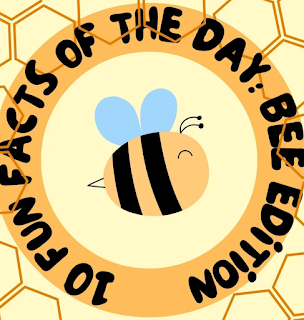10 Fascinating Facts About Bees: Essential Pollinators of Our Ecosystem
Bees are incredible creatures that play a crucial role in maintaining the balance of our ecosystem. Not only are they industrious honey producers, but they are also indispensable pollinators. Here are ten fascinating facts about bees that highlight their importance and uniqueness.
1. Master Builders
Bees are renowned for their architectural prowess. The hexagonal cells they construct in their hives are marvels of engineering, offering maximum storage capacity with minimal use of materials. This efficient design is a testament to their ingenuity.
2. The Queen’s Reign
The queen bee reigns supreme in the hive. As the largest bee, she is the sole egg-layer, capable of laying up to 2,000 eggs daily. Her lifespan can extend up to five years, ensuring the continuity of the hive.
3. The Bee Dance
Communication is vital for bees, and they have a unique way of doing it. The 'waggle dance' is a method used by bees to convey the location of food sources to their fellow hive members, demonstrating their sophisticated social behavior.
4. Speedy Flyers
Despite their small size, bees are capable of impressive speeds, flying up to 20 miles per hour. They cover significant distances daily in search of nectar and pollen, showcasing their endurance and determination.
5. Crucial Pollinators
Bees are essential to our food supply, pollinating about 70% of the crops we consume, including fruits, vegetables, nuts, and seeds. Without their pollination services, our diets would be significantly less varied and nutritious.
6. Ancient Creatures
Bees have a long history on Earth. The oldest bee fossil, found in amber, dates back 100 million years, indicating their presence since the time of the dinosaurs.
7. Recognizing Human Faces
Honeybees possess remarkable cognitive abilities. Research has shown that they can recognize and remember human faces, suggesting a level of memory sophistication that is quite surprising.
8. Five Eyes
Bees have a total of five eyes: three small ocelli on the top of their heads and two large compound eyes on the sides. These eyes help them detect light intensity and maintain their orientation during flight.
9. Female Bees Sting
Only female bees, specifically worker bees and the queen, have the ability to sting. Male bees, or drones, lack stingers and thus cannot sting.
10. World Travelers
Honeybees are not native to the Americas. They were introduced by European settlers, making them one of the many species that have traveled across continents due to human migration.
Conclusion
The next time you see a bee buzzing around your garden, take a moment to appreciate these remarkable creatures. Their role in pollination, their sophisticated behaviors, and their historical significance make them truly fascinating and indispensable to our world.
Frequently Asked Questions (FAQs)
Q1: Why are bees considered master builders? A1: Bees use hexagonal cells to build their hives, which maximize storage space and efficiency with minimal building materials.
Q2: What is unique about the queen bee? A2: The queen bee is the largest bee in the hive and can lay up to 2,000 eggs per day, living for up to five years.
Q3: How do bees communicate with each other? A3: Bees use a ‘waggle dance’ to communicate the location of food sources to other bees.
Q4: What role do bees play in pollination? A4: Bees pollinate about 70% of the fruits, vegetables, nuts, and seeds that humans consume, making them crucial for our food supply.
Q5: Can bees recognize human faces? A5: Yes, studies have shown that honeybees can recognize and remember human faces.
- #BeeConservation
- #Pollinators
- #EcosystemHeroes
- #SustainableAgriculture
- #SaveTheBees

